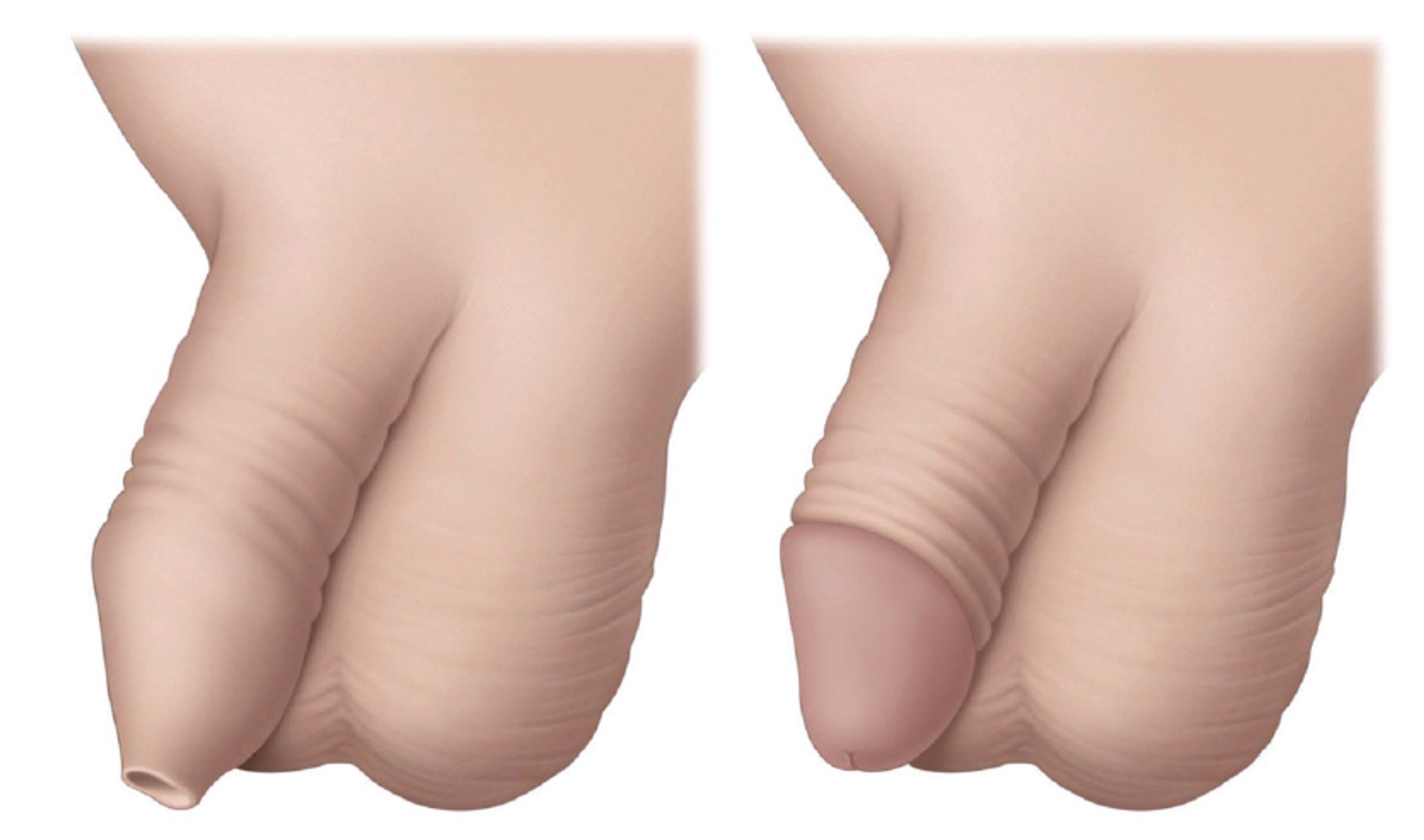Phimosis
Figure 1: Uncircumcised and circumcised penis.
What is phimosis?
The head of penis is covered by a tissue called the foreskin. The foreskin is usually loose and slides easily over the head of the penis. This movement allows us to urinate or for the penis become fully erect (in adults). Sometimes, though, the foreskin is too tight. It can close over the glans and become unable to move (Fig. 1). This condition is called phimosis.
How common is phimosis?
Phimosis is normal in infants and toddlers when the foreskin is attached to the glans for the first few years. The foreskin naturally separates between ages 2 and 6 in most children. Pathological phimosis occurs in about 50% of 1-year-old boys, 10% of 3-year-old boys and less than 1% of boys aged 16.
What causes phimosis?
Phimosis is natural in very young male children. In older boys and adults, it might be caused by damage or scarring. It is more likely to occur with:
Urinary tract infections that keep coming back
Infections of the foreskin
Repeated rough handling of the foreskin
Trauma that affected the foreskin
How is Phimosis diagnosis?
Phimosis typically becomes a problem when symptoms occur. Symptoms include:
Redness, soreness, or swelling of the foreskin
Ballooning of the foreskin while urinating
Inability to fully pull back the foreskin by age 3 or older
Inflammation of the head of the penis
Thick discharge under the foreskin
If you / your child have any of these symptoms, you should see a doctor.
The diagnosis of phimosis is based on a history and physical examination. The doctor may request a urine sample but other tests are usually not required.
How is phimosis treated?
Treatments for phimosis include:
Topical steroid for phimosis without scarring
For mild severity
Surgical removal of the foreskin (circumcision)
Moderate-severe disease
Topical steroid cream work well in children but are less likely to cure phimosis in adults.
What complications can occur from Phimosis?
If the tight foreskin is pulled back behind the head of the penis and becomes stuck, this leads to swelling and pain of the head of the penis and the foreskin. If left untreated it can cause blackening and/or hardening of the head of the penis that can eventually lead to irreversible changes.
This is an emergency and must be reduced back by a doctor immediately. If this cannot be done a small surgical cut to loosen the foreskin may be required.

